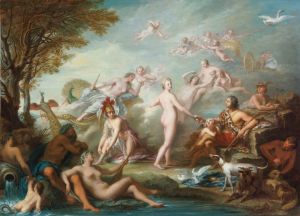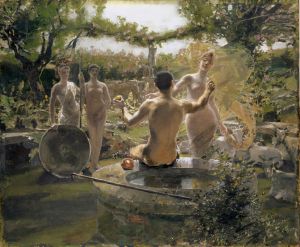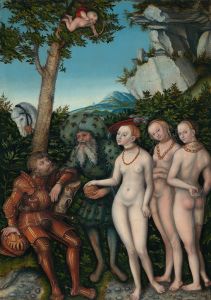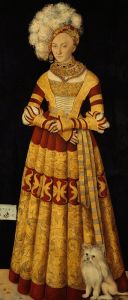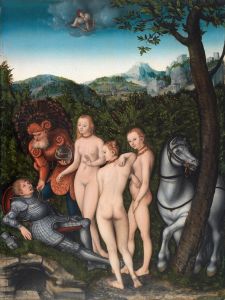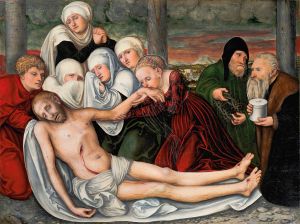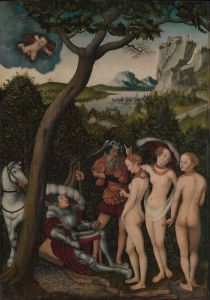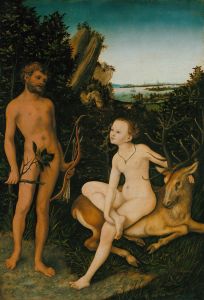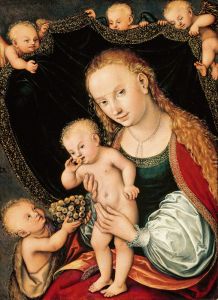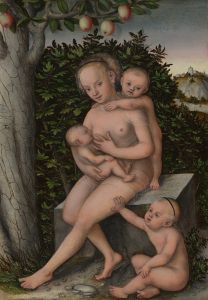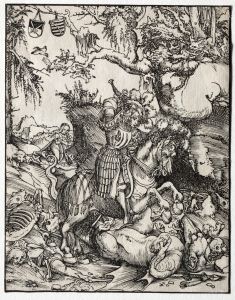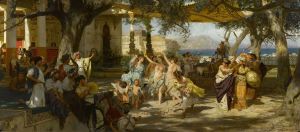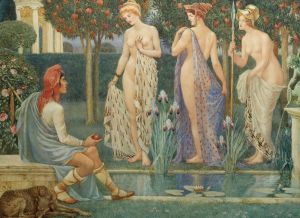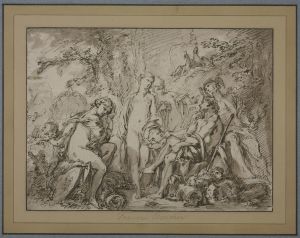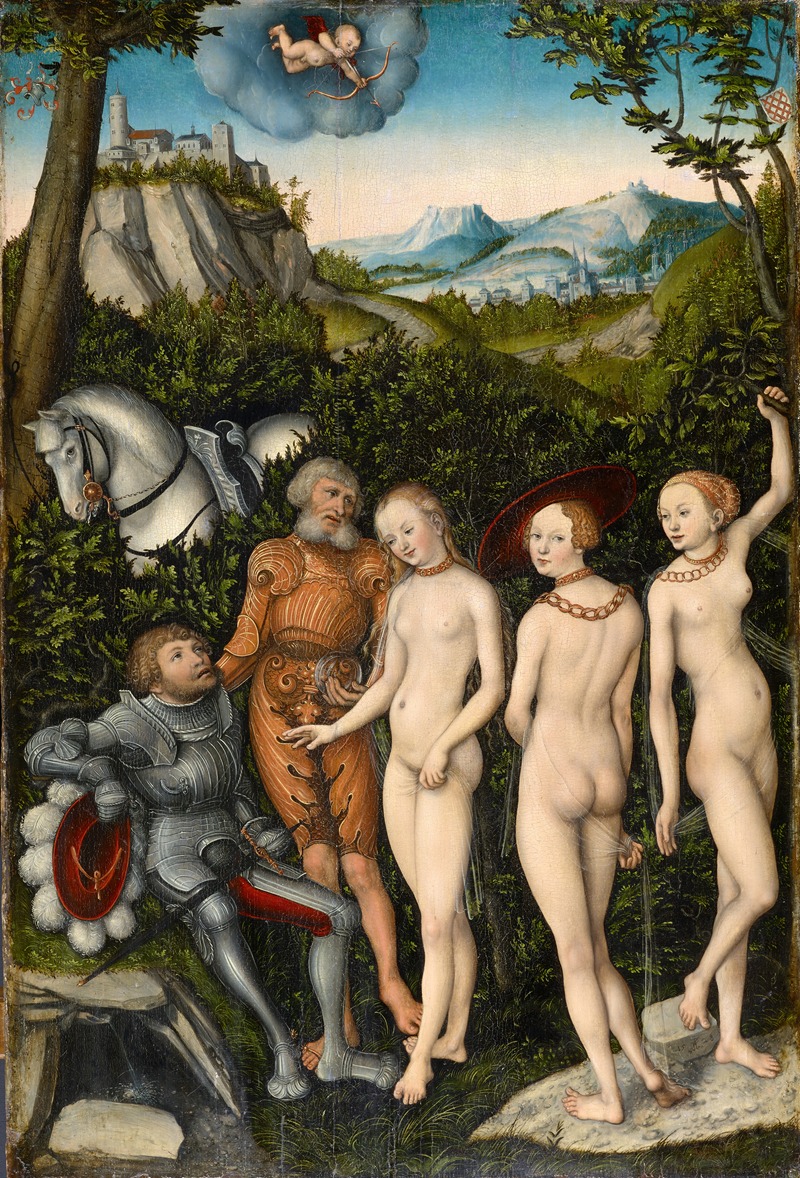
The Judgement of Paris
A hand-painted replica of Lucas Cranach the Elder’s masterpiece The Judgement of Paris, meticulously crafted by professional artists to capture the true essence of the original. Each piece is created with museum-quality canvas and rare mineral pigments, carefully painted by experienced artists with delicate brushstrokes and rich, layered colors to perfectly recreate the texture of the original artwork. Unlike machine-printed reproductions, this hand-painted version brings the painting to life, infused with the artist’s emotions and skill in every stroke. Whether for personal collection or home decoration, it instantly elevates the artistic atmosphere of any space.
Lucas Cranach the Elder, a prominent German Renaissance painter, created several versions of "The Judgement of Paris," a popular mythological theme during the Renaissance period. This theme originates from Greek mythology and tells the story of the mortal Paris, a prince of Troy, who was chosen to determine the fairest goddess by awarding a golden apple to either Hera, Athena, or Aphrodite. Each goddess offered Paris a bribe: Hera promised power, Athena offered wisdom, and Aphrodite tempted him with the love of the most beautiful mortal woman, Helen of Sparta. Paris ultimately awarded the apple to Aphrodite, an act that led to the events of the Trojan War.
Cranach's depictions of "The Judgement of Paris" are notable for their characteristic style, which includes elongated figures, detailed landscapes, and a blend of Gothic and Renaissance elements. His works often reflect the cultural and artistic transitions of the early 16th century, showcasing both the lingering medieval influences and the emerging Renaissance ideals.
One of Cranach's most famous versions of "The Judgement of Paris" is housed in the Städel Museum in Frankfurt, Germany. This painting, like others by Cranach on the same theme, portrays the three goddesses in a natural setting, with Paris depicted as a shepherd. The figures are typically shown in the nude, a common practice in Renaissance art that allowed artists to explore human anatomy and beauty. Cranach's interpretation is distinguished by its attention to detail, particularly in the depiction of the goddesses' flowing drapery and the lush, idyllic landscape that surrounds them.
Cranach's work is also known for its symbolic elements and allegorical content. In "The Judgement of Paris," the artist not only illustrates a mythological narrative but also engages with themes of beauty, choice, and consequence. The painting reflects the Renaissance fascination with classical mythology and the humanist interest in exploring human nature and moral dilemmas.
Lucas Cranach the Elder was a court painter to the Electors of Saxony and a close friend of Martin Luther, which influenced his work significantly. While he is renowned for his religious paintings and portraits, his mythological works like "The Judgement of Paris" demonstrate his versatility and skill in handling diverse subjects. His ability to convey complex narratives through vivid imagery and his distinctive style have cemented his reputation as one of the leading artists of the German Renaissance.
Cranach's "The Judgement of Paris" continues to be studied for its artistic merit and its reflection of the cultural and intellectual currents of its time. The painting exemplifies the blend of Northern European artistic traditions with the classical themes that were being rediscovered and celebrated during the Renaissance. Through his work, Cranach contributed to the broader European appreciation of mythological subjects, influencing both his contemporaries and future generations of artists.





